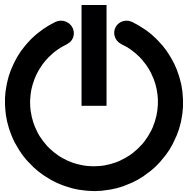Radiologists: could shutting down your computer at night save you $10,000 a year?
by
Brendon Nafziger, DOTmed News Associate Editor | November 01, 2011

What's an easy way for a radiology department to save almost 10 grand a year, while drastically shrinking their carbon footprint? Having doctors push the off button.
A study in the November issue of the Journal of the American College of Radiology says hospital radiology departments can cut their workstation energy costs by 76 percent a year simply by having doctors shut down their computers at the end of their regular shift.
Turning off PACS workstations and monitors after an eight-hour day would save a department almost 84,000 kilowatt-hours, or $9,225.33, a year, assuming the energy cost of 11 cents a kilowatt-hour, the average for Maryland, where the study took place. That's the annual equivalent of taking 11 and a half cars off the road or saving 149 barrels of crude oil, the authors said.
"We should be aware of the ongoing energy costs to the system of this equipment and look for ways to reduce it, both as a cost-saving measure and a way to help promote healthy living for our patients with the reduction in greenhouse gases and carbon emissions," Dr. Prasanth M. Prasanna, the study's lead author, said in a statement.
For the study, the researchers in the radiology department at the University of Maryland Medical Center in Baltimore hooked up several workstations to an electricity meter, measuring energy use, and then extrapolated what the total annual energy burden for the department would be.
A single monitor left on 24 hours a day for a whole week would use, annually, between 50 and 1,400 kilowatt-hours, equal to about $6 to $154 in yearly costs. A workstation left on the same amount of time would consume another 460 or 2,400 kilowatt-hours a year, or $60 to $260. All told, if all workstations and monitors were left on all the time, they would consume 138,000 kilowatt-hours a year, to the tune of about $15,000. But if screens went dark after 8-hour days, you could shave off almost 84,000 kilowatt-hours from the total, or $9,225.33.
Of course, a hospital is a round-the-clock environment, and it's not possible to turn off all PACS workstations after a doctor's shift. Also, PACS upgrades often happen at night. Still, shutting down machines that aren't in critical areas or blocked for the graveyard shift could make a "large difference" in energy demands, the authors write. Plus, as updates are infrequent, PACS systems can be left on only for scheduled downloads.
Still, how much of an effect will this advice have? Don't most people turn their equipment off (when it won't be used in a later shift) at the end of the day? The researchers don't think so.
"Our calculations are based on the assumption that no workstations or monitors are ever turned off," they write. "In our experience, for the most part, people do not turn off equipment at the end of the day. We felt that this assumption was valid given our experiences, and these data could also be considered a worst-case scenario. Further studies could be performed to determine the actual percentage of equipment shut down over a given time period, and our calculations could be readjusted."
|
|
|
You Must Be Logged In To Post A Comment
|
